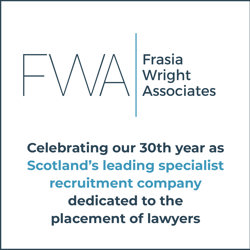Scotland's Visitor Levy divides city and countryside as reform calls grow

As the half-term school holidays get underway, Peter Ranscombe examines how Scotland’s councils are approaching the visitor levy.
Lesson number one – if you’re talking with hoteliers about the visitor levy then don’t fall into the trap of calling it a “tourist tax”. The charge doesn’t just apply to tourists – business travellers or folk visiting friends must pay the tax too.
Scotland’s councils gained powers last year to introduce the levy as a percentage of the accommodation’s price. City of Edinburgh Council made the early running, with advanced bookings since 1 October required to display a price including the visitor levy.
Other councils are less keen, with many tourism businesses warning the added cost may deter visitors, especially from the crucial domestic market. Problems with the underlying legislation are also causing headaches.
“There’s a distinct divide between urban and rural economies,” points out Scottish Tourism Alliance chief executive Marc Crothall. He highlights that, while Edinburgh will introduce the levy on 24 July 2026 – with Glasgow following on 25 January 2027 and Aberdeen on 1 April 2027 – rural councils including Argyll & Bute and East Ayrshire have stepped back, while Highland is expected to decide in December.
Marc underlines teething problems with the legislation, which requires accommodation providers to display a cost including the visitor levy during booking. However, many of the booking websites used by accommodation providers can’t display the visitor levy yet and some can’t be configured to recognise levy caps.
“There is also the issue of protecting commercial contract arrangements between third party booking agencies that contract a block of rooms in advance,” he points out. “The legislation states that the guest must be charged the levy at the price the rooms were initially sold, which is impossible as the rate contracted will be invisible to the guest as there will be many other middle agents in the booking process building up a package.
“Our preference from the outset was never to go for the percentage charge and instead charge a flat fee per night. If it was a, say, £4 flat fee then it would be much more transparent and easier to display to the guest – as Wales has gone for with £1.75 per adult per night or 75p per child per night.”
Industry highlights legislative issues
Marc highlights that Liverpool’s Accommodation Business Improvement District (BID) introduced a £2 per night levy in June, while Manchester Accommodation BID introduced its £1 levy in 2023, which he stresses have been implemented with little or no debate or concern. The UK Government ruled out an England-wide visitor levy, but elected mayors have called for devolved powers to introduce charges in English regions.
“In the Scottish Parliament, Fergus Ewing suggested using an ‘expedited bill’ to make an amendment to the visitor levy legislation before the election,” Marc adds. “Ivan McKee, the public finance minister, had intimated in an earlier session that he recognised there needed to be legislative change to address the issues highlighted by industry.”
Garry Clark, a seasoned visitor levy watcher who’s followed the debate since his time at the Scottish Chambers of Commerce and now as development manager for the East of Scotland at the Federation of Small Businesses (FSB), warns many smaller operators in Edinburgh still don’t have the information they need to implement the levy. “The pace needs to be right for small businesses,” he adds.
Garry highlights the need for each council to gather accurate economic data to study the potential effects of introducing a levy in its area. “The profile for a visitor to the Highlands – who might stay a few nights in Inverness before doing the North Coast 500 or visiting Skye – will be different to a visitor in Edinburgh,” he explains.
“The Highlands might want to consider whether alternatives, such as a point-of-entry tax – which could include motorhomes and campervans – or a cruise ship tax, worked better. Neither of those are covered by the current visitor levy legislation, and their economic impact in any particular area would also need to be carefully considered.”
Pamela Gilmour, counsel at Dentons, worries about the knock-on effect for investment. “As Andrew Bailey, Governor of the Bank of England, highlighted at Scotland’s Global Investment Summit last week, we need to create a supportive environment for investment to drive economic growth, which includes pragmatic and well thought out policy and tax frameworks – this applies as much to the hotel and hospitality sector as anyone else.”
‘Don’t bite the hand that feeds you’
Colin Marr, chief executive at Inverness Chamber of Commerce, says: “The industry is suffering because Scotland is an expensive place to visit – a 5% visitor levy is too high and will put some visitors off. Comparisons with successful visitor levy schemes throughout Europe are not reasonable because our VAT rate for hospitality is significantly higher.
“But, above all, The Highland Council has no clear plans for how the levy will be spent to support the industry. This contrast sharply with, for example, Aberdeen City Council, which has stated clear percentages that will be used to market Aberdeen to tourists and to establish a convention bureau to attract conferences to its city.”
Pamela adds: “It is deeply unpopular with locals in rural areas where, for example, you may need to take a hotel if visiting a relative in hospital, or if you are required in Inverness for work purposes. Any policy framework has to be dynamic and adapt to local markets to build a sustainable, realistic revenue stream and community trust – ‘don’t bite the hand that feeds you’ springs to mind.”
Further south, Garry also underlines the need for councils to use their powers to adjust the levy even within their areas. “In Fife, for example, are you going to tax workers coming to work at Rosyth and staying in hotels in the same way as tourists coming to play golf in St Andrews?” he muses. “Councils have the power to implement the levy in parts of their area rather than their whole area, so these are the types of questions they need to think about.
“Not enough work was done on this tax as it was going through the Scottish Parliament. It’s an example of where the committee system could do better in terms of identifying potential issues at an earlier stage and giving them proper scrutiny during the legislative phase, which could have short circuited a lot of the problems we’ve ended up having.”







